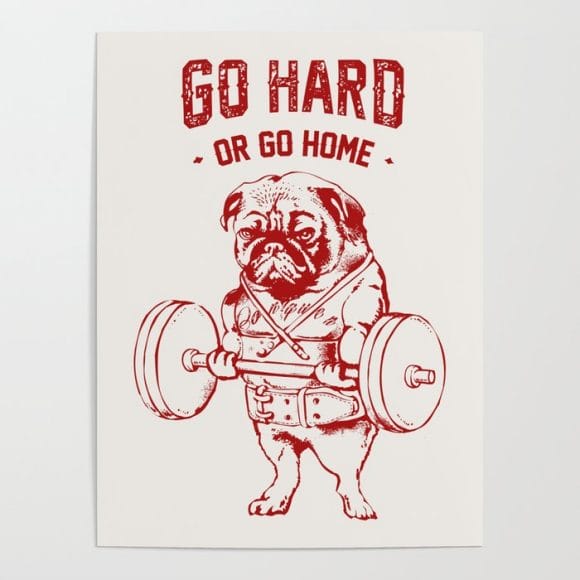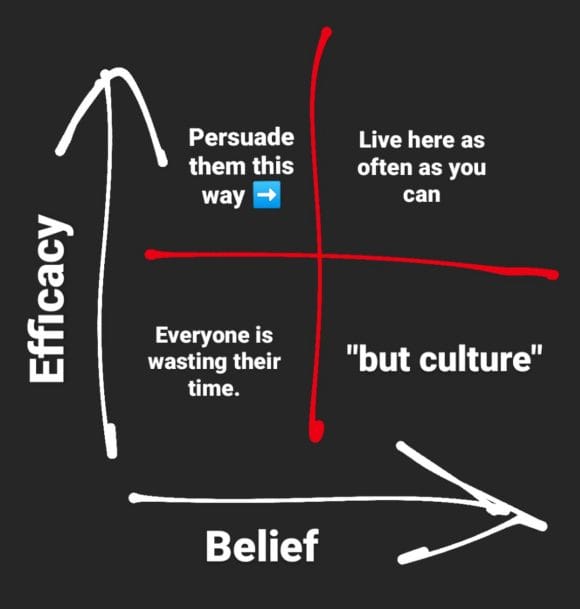Over the past two years, I’ve had an itch on my brain that I can’t shift. I’ve been thinking to myself, how did we get HERE? Not in the greater existential sense of “how did we get here” but more so how did the collective “we” in the health and fitness space get HERE.
From the functional fitness perspective; How did we get to the point where more work is seen as better work, exercise done without any regard for dosage, intensity or progression is championed, where bloody, ripped hands are glorified?

How did we get to the point where people are working out so hard or so much that they experience abnormal pain or even force injury? How did we get to the point where unbridled and unfettered intensity takes up more mindshare than sound mechanics.
Is this even real life?
Intensity is sexy. No doubt about it…going hard in a workout is the ‘cool’ thing to do. There’s a certain bravado associated with throwing down to the point where you are lying in a puddle of your sweat, your hands looking like they just went through a meat mincer, and knowing the next few days you are going to be the mayor of “Struggletown”.
But is that the standard we should be striving for?
I don’t think so.

At some point over the past 10 years, we all got caught up — someone came up with some very loose definitions around fitness and we drank the koolaid. We got caught up in watching superhuman fitness athletes compete in the Games.
We got caught up in knowing that your bloody hands will get the most likes on the ‘Gram. And we got caught up in thinking that we need to “die” for reps, rounds, or a few seconds in a workout.
The fitness industry has churned out graduates of this school of thought, who are mostly under-qualified and unknowingly are pushing this unsustainable work upon populations which are looking to live longer. Why would someone looking to live longer not practice sustainability and defer to unsustainable, overly intense work?
It just does not make sense.
A brilliant adage that an extremely good S&C coach, Keir Wenham Flatt (Former S&C coach to Los Pumas and countless other major sports teams) has coined is; when it comes to conditioning we want to do the least amount of work to get the required stimulus. The metaphor which Flatt use is trying to swat a housefly (Killing the fly is achieving the outcome of fitness); we need to just find a rolled up newspaper (or let the fly out the window!), instead most coaches are looking to kill the fly with a hand grenade, yes, the fly is killed (we get some adaptations) but the house is blown up in the process (We’ve totally overcooked it, the body is severely over worked and cannot adapt quickly enough to train appropriately again the next day).
This is misguided at best, and at worst, it’s dangerous. What we need to be doing is training to train another day. We need to be playing the long game. Functional training should be facilitating your life…not creating these insane roadblocks where you can’t train, can’t move, or can’t function.
Our training cannot and should not derail life. Say that out loud a few times. I mean…it’s so imminently reasonable that it’s almost laughable.
How can you argue that? How can you say that…no, I want to train so hard that I am completely useless for my life. Or, I want to push through the discomfort I feel on my hands to the point where I won’t be able to hold anything for days without bleeding.
This is craziness!

And I can’t sit on my high horse and say I’ve never done any of this — I used to be the first one to slam the gas pedal and ride myself off the deep end. Even though I knew the science and theory behind it, I ignored it for too long. But over the years, I’ve wised up.
I hated feeling useless outside the gym.
I didn’t want to be so sore that I couldn’t play sports or enjoy other non-gym activities. I didn’t want to be so injured that I couldn’t enjoy time with my friends and family without wincing in pain every time I stood up.
Pushing into that state…a state that is beyond working extremely hard and into “no man’s land” is not necessary.
It makes no sense to go so hard that your life outside the gym suffers. Not only does it not make sense…you’re probably doing more damage than good.
Training to the point of injury or incapacity means you’re sidelined. If you’re sidelined, you can’t train.
If you can’t train, you’re out of the game. Let me make this abundantly clear — that last rep before your hands rip / your shoulder fails / your body gives up / etc needs to be your last rep. Stop that particular movement, make an adjustment, and train to train another day.
Training to train another day doesn’t mean that we aren’t getting after it. It’s more of a rallying cry to train smart.
Don’t take this as my permission to not work hard…that’s not what I’m saying here. I am saying that intensity to the point of incapacity or injury is wrong. This might come as a shock to many- but you can still workout hard while keeping mechanically sound performance at the top of mind.
You can also workout hard by using the appropriate loads, speeds, and volumes for YOU. It doesn’t matter what Sally Firebreather is doing next to you, or Matt the Hulk is doing in the Games — all that matters is your performance relative to your goals, your fitness level, and your own threshold for the effort.
That is where a good coach is your sherpa up the mountain, the mountain of information out there. A good coach filters out the noise appropriate to YOU. You can’t be expected to do that.
The final thought I’ll leave you with might be the most compelling of them all…are those few extra reps, rounds, seconds, or kilos actually doing anything for your fitness anyway?
Let’s imagine you’re in the middle of a workout and you’re pushing hard but keeping things in check…you feel good, you’re moving well, and you know you’re working hard. That seems pretty legit, right?
Now, in the last few minutes you decide to go for broke, complete reckless abandon. Your mechanics go out the window, and your body is sending you the “hold up! we need to chill” signals.
Let’s even say…you don’t get hurt or nothing rips.
The workout ends, and you walk away. But all you got out of that risk was a few extra reps. Was it worth it? Could you have pushed yourself in a more reasonable way without potentially sacrificing your body?
Are 10 extra reps with terrible mechanics better than 5 extra reps with nearly optimal mechanics?
What really matters here, people?
How did we get here?
Our fitness can and should be challenging. We should push ourselves in the gym to create adaptation that helps us do more not only within those four walls but outside the gym as well.
But our fitness also can and should be SMART.
Challenging yourself and doing so intelligently are not mutually exclusive.
WE CAN HAVE BOTH.
If you’re interested in training smart and still working towards your goals, find a coach who thinks a little deeper about health and fitness and understands the interplay between life, sustainability and fitness along with the physiology and intentions of your exercise.
Next time you feel your hands getting close to that point of ripping instead of holding on…maybe it’s better to come off the bar, take a breather, ask the coach for a substitute movement, and train to train another day.
(Check out our 3 part series coming soon on this blog: “Why you might be training ineffectively”)

